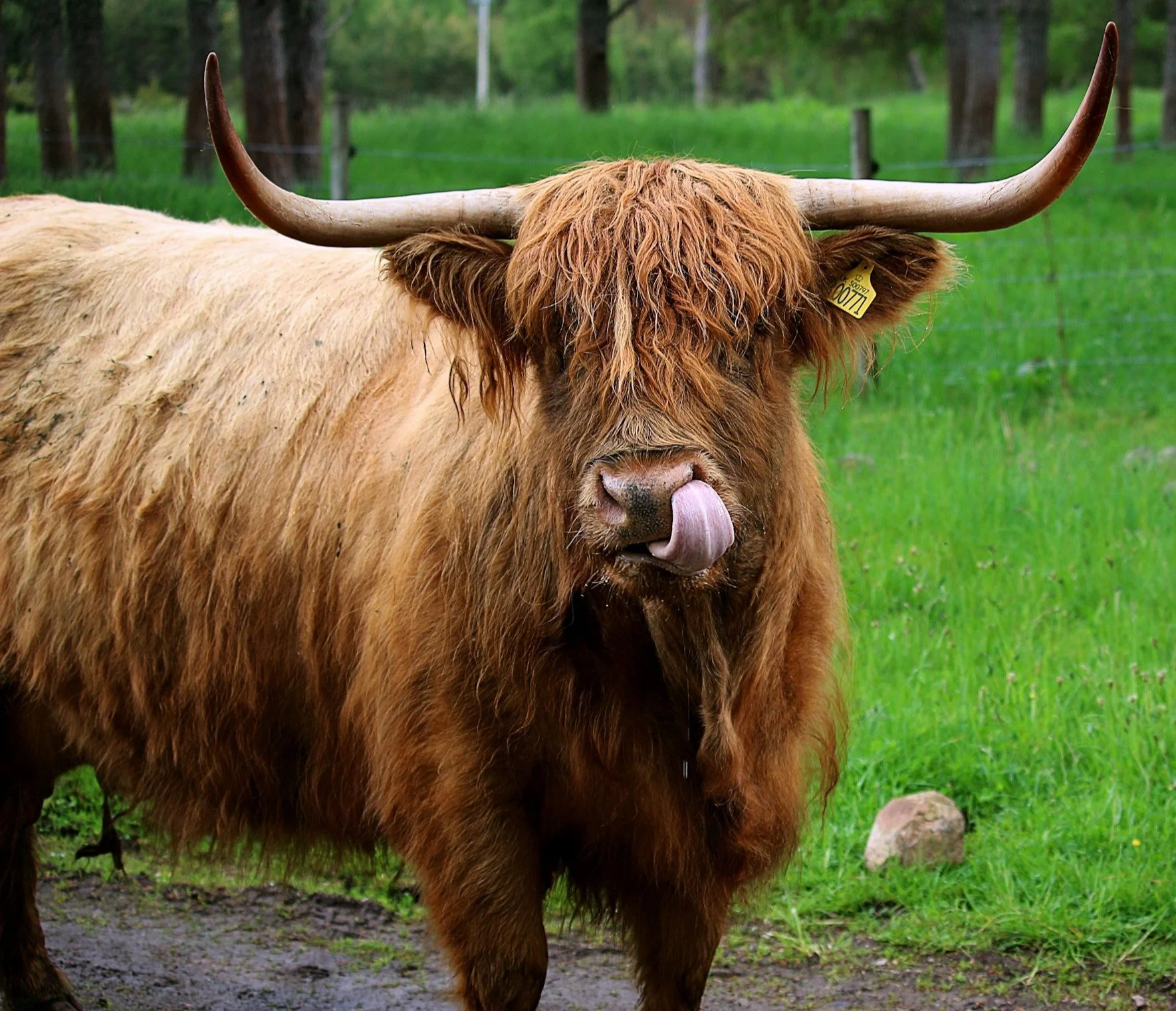The Term “Cow” Doesn’t Mean What You Might Think
Let’s start this guide off with a pop quiz!Question #1: What is this a picture of?
If your answer was “cows”, then I hate to be the bearer of bad news, but that’s not quite right.
Question #2: Is this a boy or a girl?
If you guessed it’s a boy because it has horns, I’m sorry to inform you that you’re wrong again.
If you didn’t get those questions right, don’t worry, you’re not alone! Most people who don’t work with cattle have been led to believe that every bovine they see is a cow and only bulls have horns. Let’s clear up these misconceptions and talk about what these terms actually mean.
Basic Definitions
Before we get into the specifics, let's go over the basic terms used to collectively describe different animals on a farm that say “moo”.
Bovine: “relating to or affecting cattle” when used as an adjectiveThis is because “cows” are scientifically classified under the family Bovidae and the subfamily Bovinane. However, when used as a noun, the word bovine means “an animal of the cattle group, which also includes buffaloes and bisons”. So technically “bovine” can refer to more than just cows, but it’s very commonly used in reference to cattle.
Cattle: “large ruminant animals with horns and cloven hoofs, domesticated for meat or milk, or as beasts of burden” per the dictionaryThat basically means a group of “cows” is actually a herd of cattle.
Cows: informal term for a group of cattleNow let’s move on to the more specific terms.
Babies
Baby bovines are called calves. Any calf that is born can only be a bull calf, or a heifer calf. There’s also a special category that some heifers will fall into called a freemartin.
Bull Calf: baby bovine with male anatomyHeifer Calf: baby bovine with female anatomyFreemartin: a female calf that is unable to reproduceFreemartins happen most often when twins are born if one is male and the other is female. Due to the sharing of hormones in utero, the female calf’s reproductive organs don’t fully develop, leading to infertility.
“Teenagers”
After both male and female calves have been weaned (meaning they do not need to consume milk anymore) and they are between the ages of 1 and 2, they become a yearling. Cattle that are yearlings are close to reaching reproductive maturity. Sometime between birth and weaning, many male calves will be castrated. This is where steers come from.
Steer: a former bull calf that is no longer able to reproduce due to being neuteredHeifer calves are still called heifers as yearlings.
Adults
Now we’re at the point when a heifer can become a cow.
Cow: a female bovine that has had at least one calf When you see a big udder, that means the animal is a true cow because a heifer’s udder will not develop until after she has become pregnant and she is close to having a calf.
Note: Some farms and ranches will have 1st calf heifers & 2nd calf heifers, meaning that a female won’t “graduate” to being a cow until she’s had multiple babies, but the exact definitions for 1st & 2nd calf heifers can vary from farm to farm.
Bulls are still bulls whether they’ve sired babies or not.
What about the horns?
As you may or may not have noticed, none of the terms defined above mention anything about horns. That’s because the sex of an animal has zero impact on the growth of horns. Horn growth is genetic and determined by the breed of the animal. Some breeds are naturally polled meaning it is not genetically possible for horns to grow, while other breeds can have horns. There are plenty of male cattle out there without horns, and also a whole lot of female cattle who do have horns.
Let’s go back to that quiz…
The photo with question #1 is actually 3 weaned heifers of ours. They’re technically not “cows” because they’ve never been pregnant or had a calf. For question #2, that critter is actually a girl even though she has horns.
This short guide is just the beginning! Cattle terminology can be confusing, especially with so many inaccurate myths being passed down over time. While we’ve covered the basics here, there’s still so much more to learn including more about the lifecycle of cattle, the differences between beef & dairy breeds, and differences among beef ranches & dairy farms.
For now, I’ll leave it at this: not all cattle are cows, and not every bull has horns!
Have more questions? Drop them in the comments. I’d love to answer!


